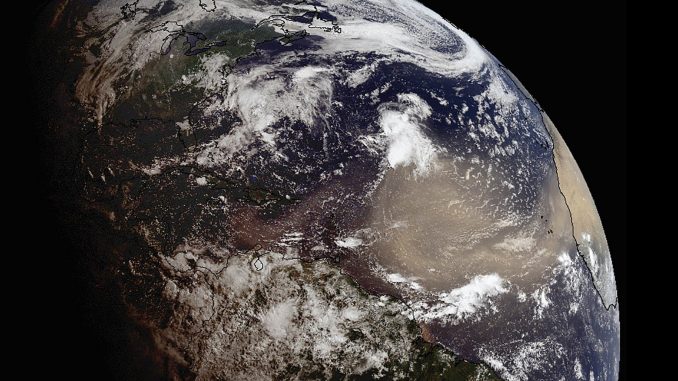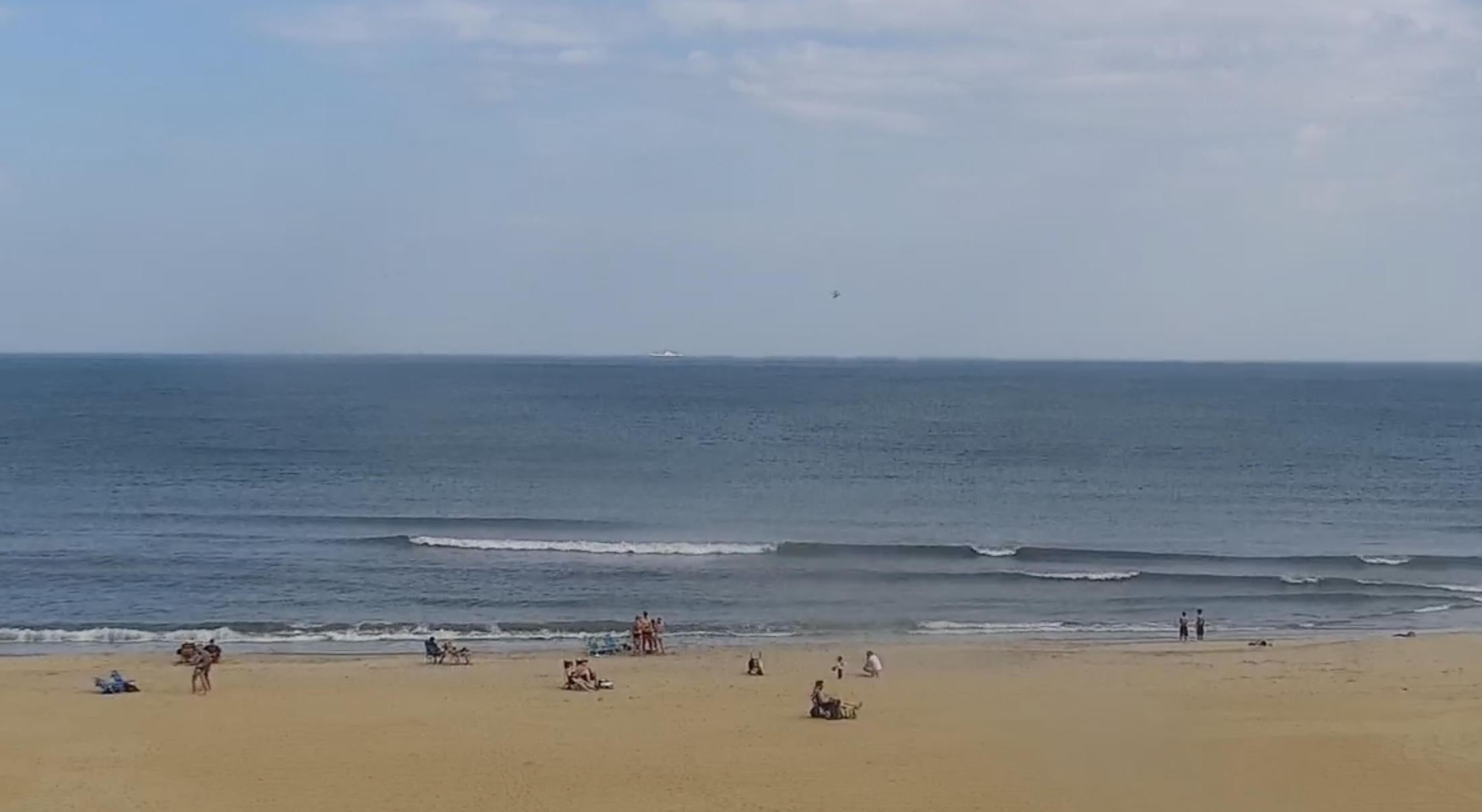
The mass of dusty air call forms over the Sahara Desert every year and moves westward across the tropical North Atlantic. The dust plume, which extends about 5,000 to 20,000 feet into the atmosphere, can be transported several thousand miles, reaching as far as the Caribbean, Florida, and the U.S. Gulf Coast when winds are particularly strong, according to the National Oceanic and Atmospheric Administration.
We flew over this Saharan dust plume today in the west central Atlantic. Amazing how large an area it covers! pic.twitter.com/JVGyo8LAXI
— Col. Doug Hurley (@Astro_Doug) June 21, 2020
But this year’s a bit different, even “extraordinarily rare,” says the Washington Post’s Capital Weather Gang.
“This event stands out in terms of the dust layer’s thickness, its low altitude and geographic reach, causing a dramatic deterioration in air quality in Puerto Rico, Barbados, Guadeloupe and numerous other locations where records are maintained,” the weather gang reported. “It is simultaneously reducing the amount of solar radiation reaching the Earth’s surface.”
The dry, dusty air associated with the Saharan dust plume has been known to cause hazy skies over the areas where it blows, as well as toxic algal blooms. It also can help suppress hurricane and tropical storm development in the Atlantic Basin due to its dense, dry air and increased wind shear,” according to NOAA.
The plume is expected to reach the Carolinas and Mid-Atlantic region late Friday through Monday, with the most likely impacts some brilliant sunrises and sunsets, the National Weather Service says.
A computer model forecast of atmospheric dust for the next 10 days. The plume of Saharan dust is expected to move over the Southeastern US next week. The dust will be primarily at higher altitudes, so the main impact will be some especially colorful sunrises sunsets pic.twitter.com/bBzFp06lCu
— NWS Eastern Region (@NWSEastern) June 19, 2020
If the dust remains thick and low in the atmosphere, we may see some hazy conditions and air quality issues that could exacerbate respiratory issues such as asthma. Stay tuned.














